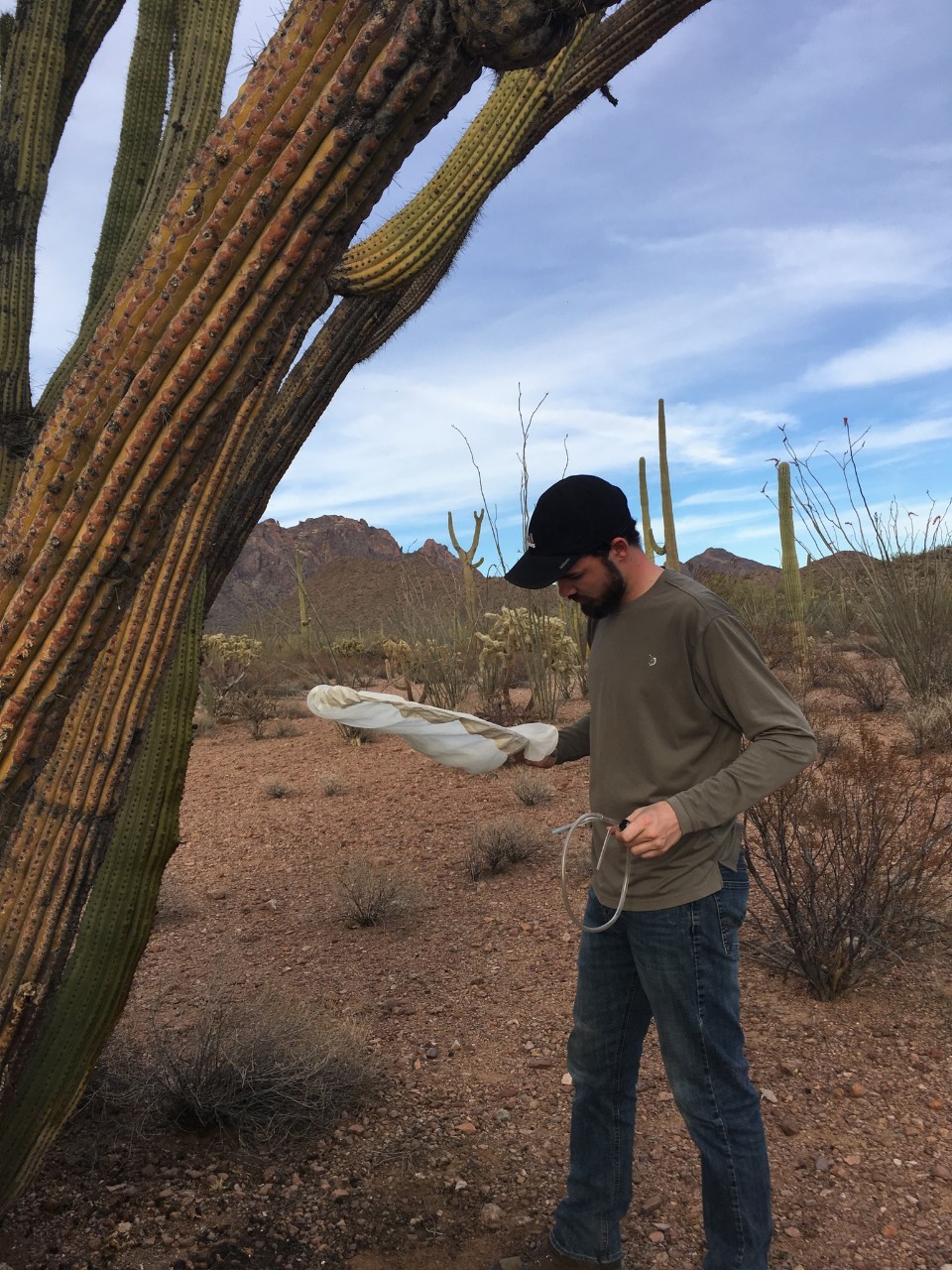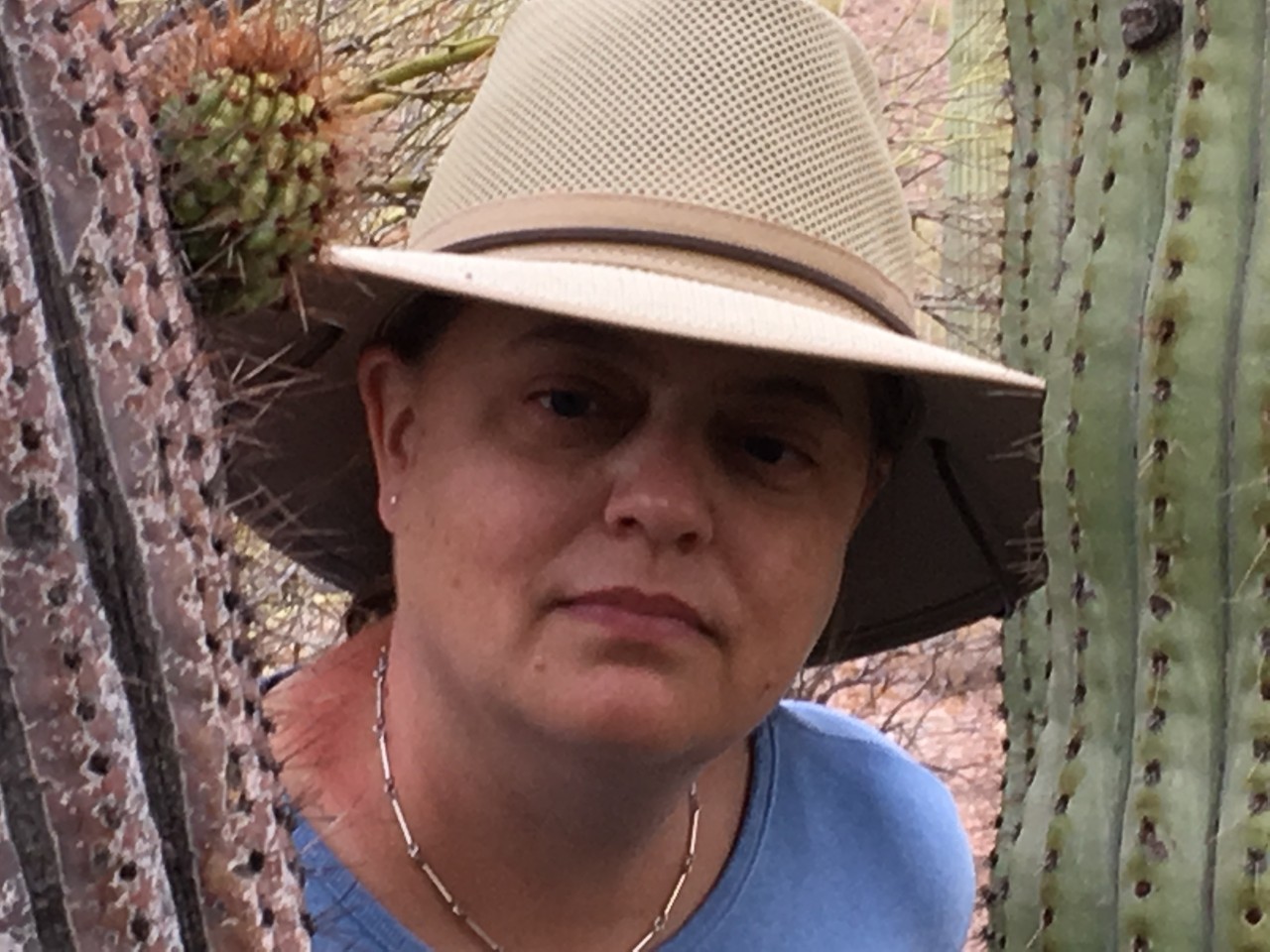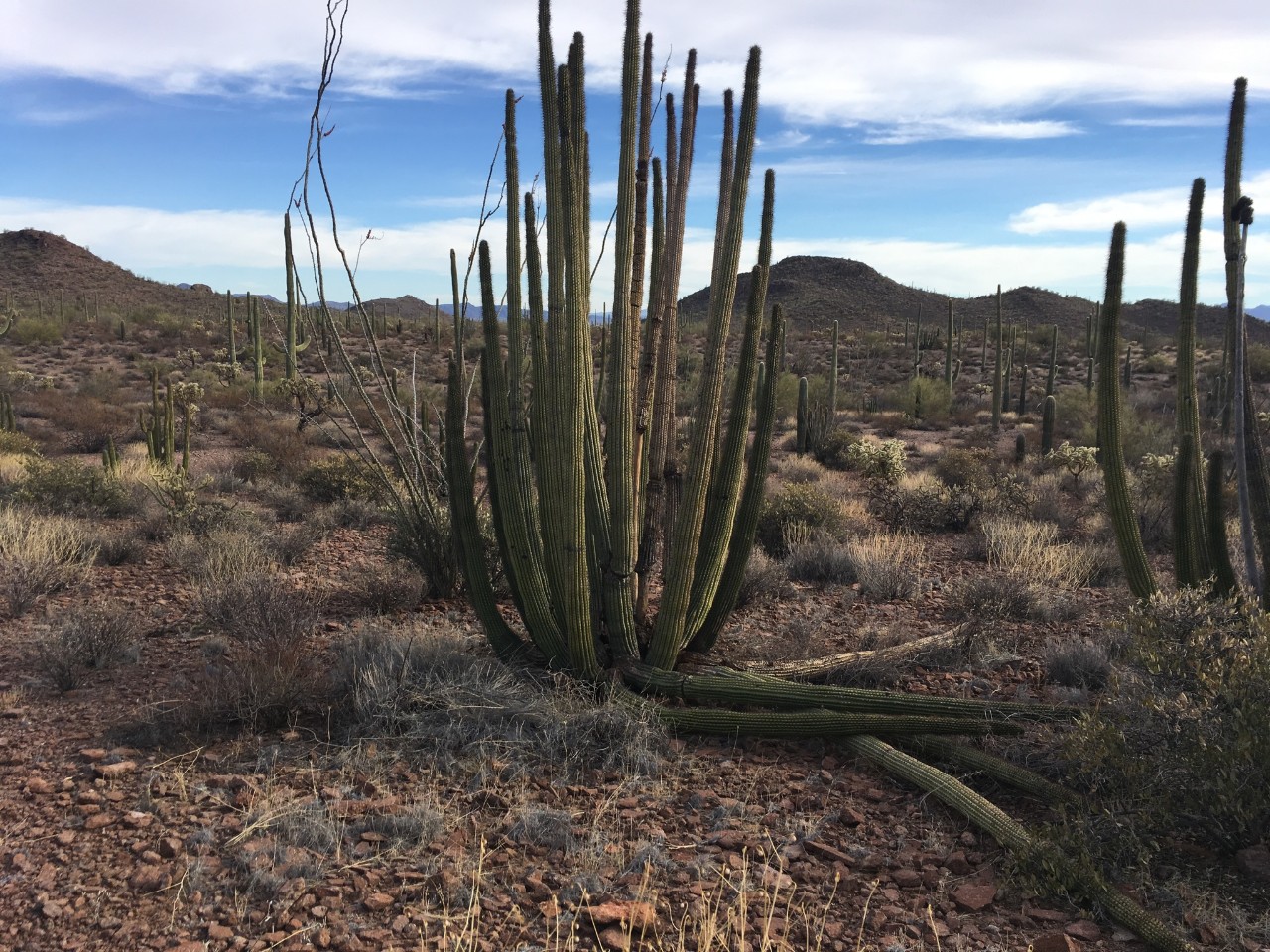What Four Populations of Fruit Flies Can Tell Us About Evolution
Researchers in UC biologist Stephanie Rollmann’s lab study the Drosophila mojavensis species, discover links between habitat shifts and olfactory specialization.

Through research, Rollman and her team are able to look at, in real time, the potential formation of new species by studying ways in which fly populations differ.
Date: May 30, 2018
By: Stuart Lindle
Contact: (513) 556-4350
This past spring break, Associate Professor of Biology Stephanie Rollmann and her lab travelled to the picturesque Organ Pipe Cactus National Monument, an International Biosphere Reserve in Ajo, AZ. They were in search of rotting cacti — or, perhaps more accurately, the population of Drosophila mojavensis that feed and breed on said organ pipe cactus.
Drosophila mojavensis is a species of small fly, closely related to the familiar household fruit fly. However, unlike its more commonly studied cousin, Drosophila melanogaster – which are generalists that feed mainly on fruits — four populations of this desert species are attracted to four specific cactus species in the Mojave Desert, the Sonoran Desert, Santa Catalina Island and Baja, CA.
Funded by the National Science Foundation, The Rollmann Lab’s research is able to look at — in real time — the potential formation of a new species by studying ways in which the fly populations differ from one another. By studying the flies’ genes, neurobiology and behavior, the lab seeks to understand how the different populations are separating and distinguishing themselves as they shift to use the different cacti across their geographic range.
“One of the things we’re interested in is, when they switch host-plants, to what extent does that contribute to the populations diverging,” said Rollmann, “and how that might be associated with potential new species formation.”

Associate Professor of Biology Stephanie Rollman conducts research in Arizona's Organ Pipe Cactus National Monument.
Population divergence
The D. mojavensis population inhabiting Baja, CA, which mate and feed on the agria cactus is estimated by some researchers to have diverged from the mainland Mexico population only a few hundred thousand years ago years ago with the rise of the Sea of Cortez. Two more populations of the species began to specialize on the barrel cactus in the Mojave and the organ pipe cactus in the Sonoran deserts. The fourth population is found off the coast of Los Angeles on Santa Catalina and feeds on the prickly pear cactus.
“We see differences in the olfactory system,” said Rollmann. “Within several hundred-thousand years we have these differences between populations, which is amazing from an evolutionary standpoint.”
Drosophila melanogaster vs. Drosophila mojavensis
Research on the common fruit fly, D. melanogaster, is well-documented, including their olfactory system — how they smell. Rollmann says it is a useful model system for examining the genetic architecture and evolution of behavior. “[D. mojavensis] is different from D. melanogaster, it behaves differently, but it’s related,” said Rollmann. “You can use some of the same tools you would to study D. melanogaster to study D. mojavensis.”
Integrating these approaches allows the lab to gain insight into behaviors such as host-preference — in this case, different kinds of cacti — and how these behaviors contribute to differences within the species.

Rotting cacti attract the subjects of Rollman's study as they seek out places to feed and to breed.
Lab methods
A typical day in the Rollmann lab involves a variety of approaches to understand the flies’ olfactory system.
The flies are first temporarily put to sleep using CO2 so they can be properly sorted and studied.
Amber Crowley-Gall, a PhD student in the lab, records responses from neurons firing in response to different odors. She does this using microscopically sharpened electrodes placed inside specialized hairs on the fly's antenna, the fly’s main olfactory organ.
Once Crowley-Gall inserts the electrodes, a nearby screen monitors the neuron reactions. They can be seen and heard as they fire in response to chemical compounds.
Data collected from these studies provides evidence of variation between the populations based on their neurological responses to different odors. These responses are then compared to behavioral responses which allow the team to assess how differences in the ability to smell can dictate changes in behavior for the flies.
“It’s really exciting when you actually get the signal and start to hear the neurons firing,” said Crowley-Gall, “and when you see the responses you get the instant pay-off of actually seeing what’s happening while you’re recording.”
When Crowley-Gall first came to UC to pursue her PhD, she knew she wanted to work with Rollmann — little did she know she’d be spending hours a day carefully probing fly antennas—but she’s glad she gave it a chance.
After studying biology as an undergrad at Wright State, she was interested in Rollmann’s research in behavioral genetics. Shortly into her time at the lab, Rollmann suggested she give electrophysiology a try.
“You have to have a certain personality to do electrophysiology,” said Rollmann. “You have to sit at a ‘scope for hours and you need to have that hand-eye coordination to insert the electrode.”
In 2014 Crowley-Gall was a recipient of the Syntech Electrophysiology Award by the International Society for Chemical Ecology for special advancements using electrophysiological methods.
“It’s become a passion of mine that I never would have expected before I got here,” she said.